Saturday, January 31 2009
Posted by: Civilis at
09: 06 PM
| No Comments
| Add Comment
Post contains 7 words, total size 1 kb.
Monday, November 03 2008
Posted by: Civilis at
08: 42 PM
| Comments (1)
| Add Comment
Post contains 25 words, total size 1 kb.
Friday, October 10 2008
Along with Mecha and Giant Robot series, the Magical Girl subgenre is a long-time staple of anime. The long-established generic plot formula is as follows: seemingly ordinary schoolgirl has encounter with cute and fuzzy magical being that grants or unlocks magical power via a magic item that is used to save the world from the forces of darkness by fighting monsters and recovering lost magical artifacts, often with the help of similar-powered friends; ultimately the powers of love, peace, and friendship are what see the heroine(s) through to the end. Often, following the basic tenets of a genre leads to a derivative series indistinguishable from others like it; the greatness in Magical Girl Lyrical Nanoha is that the series manages to redefine the genre while remaining true to the basic genre plot elements. There have been three iterations of the series so far. Magical Girl Lyrical Nanoha, taken on it's own, is good but not great, due to a slow start. When added to it's first sequel, Magical Girl Lyrical Nanoha A's, the series becomes great. (The third series, Magical Girl Lyrical Nanoha Strikers, is somewhere between mediocre and good; it's a distinct enough series in setting and type that I'm not including it here.)
The Plot is where the series really ends up standing out. The first couple of episodes of the first series are setup, and fairly standard explanation for the genre. Nanoha runs into Yunno, the cute fuzzy mage, who tells her she's got magical power, asks for her help in recovering the lost magic jewel seeds which can magically mutate things into monsters which might people and gives her her magic weapon, and Nanoha, the good little heroine accepts.
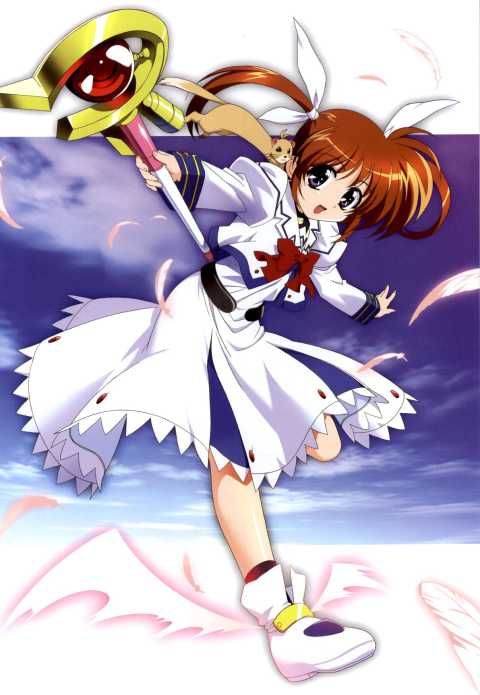
Nanoha proceeds to defeat some monsters and recover some lost seeds, and everything is standard for the genre. And then, with Nanoha "battling" a giant cat, out of nowhere comes the voice of another magic weapon... "Photon Lancer - Full Autofire"... and we meet Fate, and nothing in the series is ever the same.

Rival opposed magical girls are not a new idea, but the execution in this series goes well and beyond what is expected; while Nanoha is clearly the heroine, it is obvious right from the start that Fate is definitely not evil. The fights are often described as being choreographed as if for a mecha anime, with rapid midair combat. Behind it, of course, is still the genre exemplars of "love, peace, and friendship" but the series unofficial motto is definitely "shoot first, make friends later". Add in the Time-Space Administration Bureau (basically the magic cops), and their Magic Boy, and the fact that Nanoha's mundane friends and family notice somethings amiss and are worried, and you have a surprisingly complicated plot, with a satisfyingly emotional ending.
With the second series, Nanoha and Fate are the heroines, presented almost right from the start with a no-holds-barred fight with two superior, hostile and aggressive opponents with a nasty and painful conclusion. Again, more of the spectacular and dramatic fights. Again, the plot is complicated by our knowledge of the opponents motivations, which are not necessarily evil. Big spoiler:
The Characters feel right for the series. Nanoha begins the series in many respects as the archetypal magical girl, but there is enough depth in her relationships with her mundane friends, her family, and her enemies that she goes beyond the stereotype. Fate always seems a little too emotionless, but she fits the role in the story. The other supporting characters are fleshed out and likable. One character deserves special mention, though it is a major spoiler:
The Setting is well done; Nanoha's home, school and town are fleshed out. The Time Space Administration Bureau facilities have a very 'sufficiently advanced technology' feel, which goes with the designs for the magic weapons. There is a major magical disruption in the course of the first series which gets rapidly forgotten despite causing significant damage, and there is a very noticeable section with a different animation style in the first two episodes, but by the latter half of the first series and throughout the second, things tend to work better.
Ouran High School Host Club is also in many ways an advanced member of an established anime genre, the Shoujo Reverse Harem genre. (For those of you who don't speak Otaku, that means it's a show meant for girls / women, which features a girl and her collection of potential boyfriends). I was introduced to it by a fellow early-thirtysomething male Otaku, and I quickly figured out why; it's an excellent satire of its own genre. The screaming anime fangirls that idolize this sort of series are also one of the objects of its humor.
The Plot is a twisted take on Shaw's Pygmalion. As Eliza Doolittle, we have Haruhi Fujioka, token commoner at the richer-than-rich Ouan Academy, who accidentally breaks a valuable vase belonging to the aforementioned Host Club, which consists of six of the richest, handsomest, and most... unique... male students at the school and whose sole purpose is entertaining the school's female population. Haruhi is eventually drafted as a stand-in host to pay off the debt to the club, unfortunately before all of the club members are aware that Haruhi is a girl, not a boy. The club, then, must pass off a poor girl as a rich boy so that she can pay her debt (and because at least one may be developing a crush on Haruhi, the one female immune to the club's charms). Cue the legion of screaming fangirls. There is no coherent series plot until near the end, but the character development in between sets up a dramatic conclusion, while the character development is well handled and evenly spaced throughout the series.

The Characters are what make the series great, in part because of their depth and because of their interactions and development. All but one of the main characters are very much showing one face to the world of screaming fangirls and another face towards each other and us. Haruhi is trying to play the part cast for her by the club, and at the same time, struggling to manage with the wealth and cluelessness of most of the other club members. Tamaki Suoh, the club president, is very much the only person in the series true to himself, as the charming, outgoing, impulsive, optimistic and ultimately likable driving force behind the club and most of the subplots that make up the story. More importantly, the story itself makes light of its own duplicity with characters as well as that of the genre as a whole. There's a fun episode where the club's hopelessly obsessed and somewhat nutty self-proclaimed manager attempts to fit the club as the cast in her own vision of what the club members should be like, only to run straight into the vast concealed depths beneath a few of the characters.
The Setting is well executed. Of the three recent anime series featuring high schools for the rich and famous, Ouran Academy brings out the most vivid version, with the elaborate gardens, fancy architecture, and myriad details into how the very wealthy could live. At the same time, the series often wanders far afield, into such exotic but detailed locations as the supermarket or the local shopping mall. Of the five series listed, Ouran does spend the most time on comedy touches like exaggerated facial features, comedic lighting and backgrounds, dream sequences and looks into the character's imaginations and the omnipresent charm effects like sparkles, but the effect to me does enhance the satirical feel of the series.
Posted by: Civilis at
08: 08 AM
| No Comments
| Add Comment
Post contains 1244 words, total size 10 kb.
Tuesday, September 30 2008
I find that on one level, greatness is impossible to explain. A great anime just is; the pieces just fit together right. On the other hand, there are common threads linking the five anime I think turned out the best of the recent series, and that's enough to start from.
As an arbitrary categorization, I've decided to look at three "factors": Setting, Characters and Plot. All five series stand out in at least one of these areas, but none in all three. I don't expect a series to be perfect, but it has to stand out in some way from the rest. More importantly, a series can't fail in any of the three categories if it expects to be great.
Setting is the depth of the world of the series. At a basic level, it is the detail in the world behind the characters and plot. It is in part the artistry of the series, the use of color, scene arrangement and style to emphasize the other factors. It's also a consistent and logical background for the world beyond what is strictly necessary for the backstory. It can also be a sense that the story extends beyond what is seen on screen. A good setting is one that makes the watcher believe that the story doesn't take place on a (metaphorical) sound stage, but in a living world. For me, a great setting is one that, for all I know intellectually that the whole thing is a work of fiction, makes me emotionally want to go there and experience that.
Character is the depth of (obviously) the characters in the series. A good character should be obvious. The cardinal rule of characters should be that the author's intent for the character much match the audience's reactions to the character. (Paging Jeff Goldstein: intentionalism at work!) Some series fail because the author's visions of the characters and the ways they interact differs strongly from the ways the audience views the characters and the ways they should act. A classic anime example of this is Love Hina: the protagonist, Keitaro, is stuck with an obviously abusive relationship with Naru because of the author's focus on his predestined relationship, while the audience mostly seems to think he should stick with Mutsumi (though he loses his frequent flier miles). A great character should be larger than life; in most cases, this means one of two things: either the character fully personifies a standard anime archetype, or transcends the archetypes entirely. A great character exists to some degree independent from the series from which they come.
Plot is the story elements, both the pacing and execution of individual elements in an episode and the overall story as a whole. A good plot should be logical given the characters, at least in retrospect. On an episodic level, the action or drama should flow smoothly. On a series level, events should build off of each other to a dramatic climax. A great plot goes beyond what is expected, using foreshadowing and plot themes to accentuate the story, and making action pieces that are exciting and dramatic pieces that elicit an emotional reaction.
These are all gray areas of arbitrary categorization; it's impossible to separate the character development of a good character from the plot that drives the drama, and a plot scene must reflect the setting it takes place in.
When I mentioned that I regarded The Melancholy of Haruhi Suzumiya as a great anime, I included a caveat. In hindsight, Otaku seem to be divided regarding the series; while it was impressive when it was first released, a number have now changed their opinions after sobering up. While I still think it to be a great series, I think it lies perilously close to the border between Great and Mediocre (as opposed to the longer border between Great and Good).
The Setting is good enough, while not great. It's mostly a standard Japanese high school. The school, however, is colorful and dynamic. The club room where much of the story takes place evolves over time to reflect the events of the story. Unnamed students are visible and normal. There are a variety of non-school locations used, which are not skimped on. The second episode makes interesting use of a washed-out image to highlight Haruhi's introduction. All in all, nothing spectacular, but all beyond the minimum.
The Plot is half of what puts the series on the border between great and mediocre. The only reason the series-level plot doesn't completely bomb is that the episodes are not in chronological order, as the dramatic climax in the series is actually relatively early chronologically. As it is, deficiencies in the series-level plot are made up for by the occasional excellence in the episode-level plot for a couple of the episodes. The "Day of Sagittarius" episode is completely unconnected to the larger series plot, yet serves as a very well-written plot for pushing character development. The school festival episode is full of little bits and pieces of plot excellence that only really show up when re-watching the episode. Finally, the series has one of the best five-or-so minute bits of plot-animation in any recent anime. Caution: Big Spoiler:
Several of the Characters in the series are what really make the series great. Ironically, Haruhi Suzumiya herself is not great, and nearly relegates the series to mediocre all by herself. She's not all that likable a character through much of the series, despite being the title character. In a similar dynamic to Love Hina, her predestined relationship with Kyon is, at least through the series, something not desired by the audience. The difference between Kyon and Keitaro is that at some level, Kyon seems to be fighting his destiny through his relationship with two great characters, Yuki and Mikaru.
I spoke earlier that some great characters seem to personify the standard anime archetypes. Mikaru is, at some level, Moe incarnate. She takes half a dozen of the stereotypical male attractors and combines them with a likable personality.
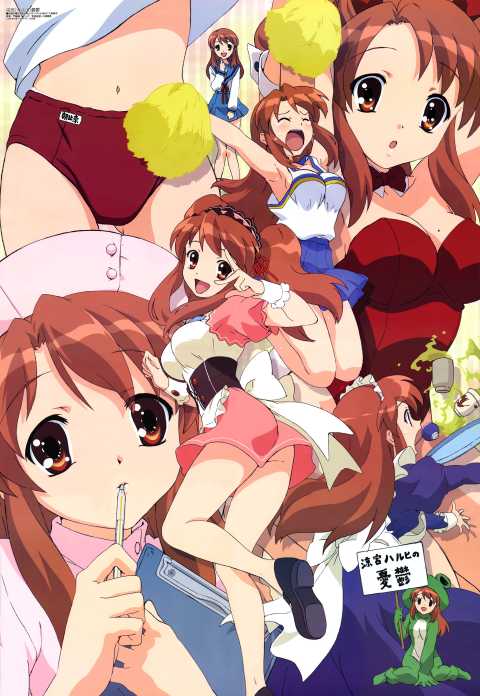
Yuki, likewise, has taken over a standard anime archetype, the quiet, seemingly emotionless one. To some degree she's larger then life because of her absence of outward signs of personality for most of the series, which makes those occasions where some emotion is briefly visible deep down inside all the more poignant.
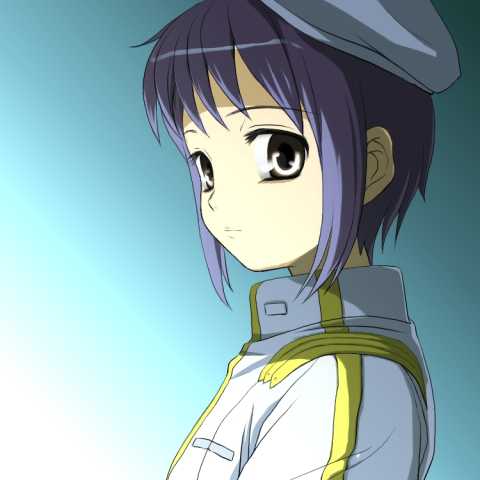
Neon Genesis Evangelion was a series that could have been great. I believe it failed in its attempt toward the end of the plot. But no one can deny that some of the characters it spawned were great archetypes and grew beyond the end of the series (in part because of aggressive marketing on Gainax's part). For a long time, Rei Ayanami was the archetype for the quiet, seemingly emotionless one, while Asuka Soyru-Langley was the archetype for the overly active, intimidating, pushy and loud Lucy van Pelt type. In my opinion, Yuki has unseated Rei, while Haruhi failed to unseat Asuka from the archetype exemplar, but not for lack of trying.
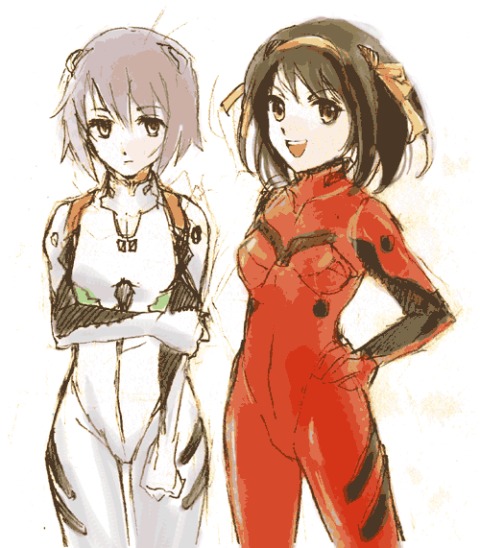
Posted by: Civilis at
07: 54 PM
| No Comments
| Add Comment
Post contains 1230 words, total size 9 kb.
Monday, September 22 2008
The five are:
5. Melancholy of Haruhi Suzumiya (before I get flamed on this one, let me say in advance that this series gets a big asterisk after it in the record books).
4. Magical Girl Lyrical Nanoha and Magical Girl Lyrical Nanoha A's.
3. Ouran High School Host Club
2. Tengen Toppa Gurren Lagann
1. Aria (all three seasons)
It's hard to compare older series, as nostalgia values for series I enjoyed back in the day inflate some series compared to current offerings. Irresponsible Captain Tylor is one of my favorite anime of all times, but comparing it to modern series is unfair. Even Azumanga Daioh, which is relatively recent, feels odd when compared to recent releases.
My rankings are, also, my own. As I tell everyone that asks me what is good to watch, everyone's tastes are different. No two Otaku will ever agree on what series are good and which stink.
I've found that in large part, I'm drawn to series that look good. While good characters and a good story are important, I tend to emphasize visually distinctive and attractive series. I am remarkably inept at expressing myself visually, so I tend to be in awe of studios that can use their talents to produce a visual feast.
Posted by: Civilis at
09: 23 PM
| No Comments
| Add Comment
Post contains 267 words, total size 2 kb.
Sunday, September 21 2008
I saw my first Obama/Biden election sign off one of the exits on 66 last Tuesday. Aside from the four small signs in the area of the overpass, I haven't seen any other Obama/Biden signage or decor. This makes sense, to some degree, because Biden may as well be Generic Democrat as far as the election is concerned. Obama himself is all that is needed to sell the ticket. When I was in Baltimore for Otakon, the shopping area in the inner harbor had a Urban Outfitters store with a prominent wall devoted to Obama merchandise. He has become something of a iconic figure in his own right. Biden isn't needed to sell the ticket.
I saw my first McCain/Palin bumper-sticker last Friday morning, and have been seeing McCain / Palin signs and bumper stickers popping up all over the place since. Actually, I saw a "Women for Palin" sticker on the back of a minivan last Wednesday; it seems so odd to have a VP candidate capable of standing separately from the Presidential candidate to sell the party ticket.
Posted by: Civilis at
08: 59 PM
| No Comments
| Add Comment
Post contains 220 words, total size 1 kb.
Thursday, September 11 2008

Posted by: Civilis at
05: 17 PM
| No Comments
| Add Comment
Post contains 3 words, total size 1 kb.
Tuesday, September 02 2008
Top Five First Episodes:
Mahou Shoujo Lyrical Nanoha A's
Ouran High School Host Club
Noir
Soul Eater
Ghost in the Shell: Stand Alone Complex
Top Five Final Episodes:
Irresponsible Captain Tylor
El-Hazard: The Magnificent World
Mahou Shoujo Lyrical Nanoha A's
Aria: the Origination
Dual!
Posted by: Civilis at
07: 22 PM
| Comments (1)
| Add Comment
Post contains 56 words, total size 1 kb.
Saturday, August 30 2008
The problem is that your opponent has a strategy, and makes plans based around what he thinks your strategy will be. If he's good, he will have anticipated your plans and come up with a way to use them against you. Luck also plays a factor; sometimes things won't go your way. In some cases, carrying on with your strategy is still the best bet. In most cases it is necessary to make minor adjustments while keeping the general framework of your initial plan. Sometimes it becomes necessary to scrap the whole thing and try something else, often something that is quite risky, something that would be quite a poor bet if it had been your initial strategy.
In a game, when your opponent, or one of your opponents, chooses to change to a risky plan in mid game, it can affect everyone else's plans by opening up new options and fundamentally changing the nature of the game. I've played a number of games where players have the safest path by choosing a logical strategy, with a little luck and skill determining which of the safe players comes out ahead. If one player chooses a risky strategy, skill becomes irrelevant for any of the other players and may even be counterproductive, making it a viable strategy for a player with little luck.
What we have in the 2008 Presidential elections is a case where both major parties have dropped the usual logical, safe strategies for risky ones. It's come down to which sound bites are more effective and which candidates will catch on with the population at large, factors largely beyond the control of the party strategists. A crafty PR person might be able to slightly shift the flow of public opinion at this point, but I feel that it's all in the hands of the public from this point forward. I'm going to sit back and watch the fun.
Posted by: Civilis at
08: 48 PM
| No Comments
| Add Comment
Post contains 372 words, total size 2 kb.
Thursday, August 21 2008
One of my favorite fallacious arguments from the progressive left generally takes the form of "Because true Christians are charitable towards the poor, they support massive government wealth redistribution programs", with the conclusion that "the Religious Right are therefore not true Christians". If the argument is secular, you can substitute "Truly Compassionate Individuals" for "True Christians" and replace the conclusion with "Therefore Republicans are Evil." It's a seductive argument, because people want to think that charity towards the poor is a good thing.
This argument has many flaws, but the biggest of these is what I call the Robin Hood fallacy, which is that "robbing from the rich and giving to the poor", which is what the progressives are arguing for, is not the same as just "giving to the poor". Since it's the government involved, "robbing" is not an appropriate verb, but the same holds true if you replace "robbing" with "taking". To put it more philosophically, there's no virtue in compulsory "charity".
Although I lean libertarian in terms of political philosophy, at least when it comes to domestic politics, I recognize that some form of government directed safety net is a fact for the foreseeable future, and probably not bad in and of itself. That being said, arguing for increasing the size of said net does not make one 'good'. If I take someone else's money and give it to charity, I have not sacrificed anything of my own, and am therefore saying that those ends are not worth anything of mine. Likewise, the person from who the money is taken didn't choose to support whatever cause towards which the money was spent.
Robin Hood, the mythological figure, is specifically a bad example because, at least according to the stories, those he was stealing from were generally associated with the traditional form of the worst political philosophy in history, known as the Divine Right of Kings, the idea that a monarch or ruler was an absolute ruler behest to no terrestrial authority. Despite the name, the basic idea of the absolute despot or despotic class has unfortunately been common in almost all cultures, and has been associated with secular and atheist rulers as well as ones that have cited religion as their excuse for their despotic reigns.
To sum up, charitable giving towards the poor is generally a good thing. Taking from someone else to do so, however, is not. Though I'm willing to give some credit to dead mythological swashbuckling British bandits...
Posted by: Civilis at
07: 55 PM
| No Comments
| Add Comment
Post contains 503 words, total size 3 kb.
Thursday, August 14 2008
I have been trying to figure out how to upload my photos to Pikasa, without much success. [Update: Success! The photo album is here.] I was again accompanied by a friend from college that is a better photographer, and his photo album is here. As his taste in anime is different, his taste in photos is different.
Tengen Toppa Gurren Lagann, which last year was still showing on Japanese TV, is now finished and being released in the US, so it's not surprising that there were more cosplayers from this series, and that more characters were represented.
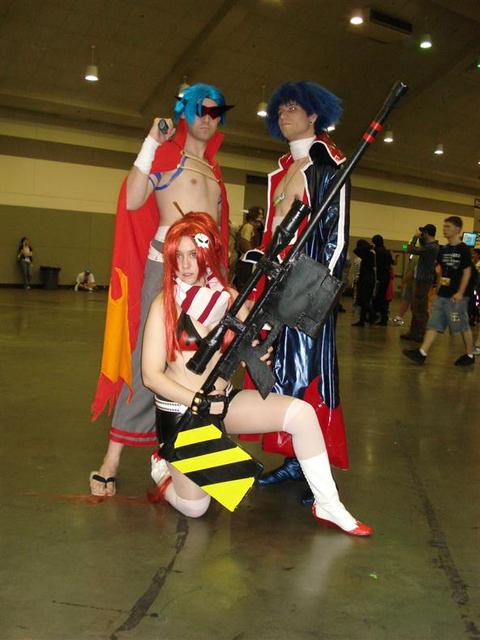
Of the other notable series, Ouran High School Host Club and the Melancholy of Haruhi Suzumiya are still popular. Fate/Stay Night, Hellsing, Revolutionary Girl Utena, and Sailor Moon were somewhat less represented than last year. More importantly, Bleach, Naruto and Fullmetal Alchemist were all significantly less represented than last year. No series or game was as heavily represented this year as these series had been in previous years.
Of the series that are still airing in Japan, Soul Eater had the largest following, which is a good sign for this enjoyable series.
This year, I finally saw two Aria cosplayers, a good Minuzashi Akari and an excellent Akira Ferrari, who was not done justice by my horrible photography skills.
The convention always has a sizable percentage of video game character cosplayers and cosplayers from American TV, movies, comics and other popular culture.
As can be expected, the Joker has unseated V as the reigning anarchist terrorist fan favorite. The Kingdom Hearts and Final Fantasy fans were significantly less present than in previous years. Phoenix Wright, Metal Gear Solid, Mario Brothers and Zelda were about as big as last year. The big winner in video games was Team Fortress 2. For a game of cartoonish classes rather than characters, the game attracted a large stable of cosplayers. Spies and scouts were the most popular, but I saw well executed members of every class.
And a fun time was had by all.
Posted by: Civilis at
08: 22 PM
| No Comments
| Add Comment
Post contains 361 words, total size 3 kb.

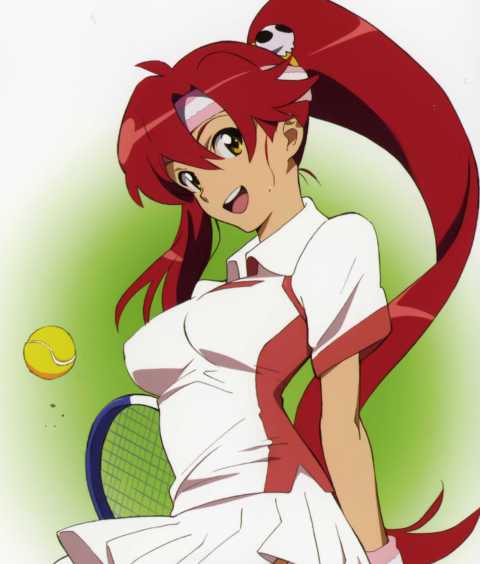
Posted by: Civilis at
07: 14 PM
| No Comments
| Add Comment
Post contains 69 words, total size 1 kb.
Tuesday, August 12 2008
1. It's amazing how many times I found myself thinking of the war as "the Soviets invade Georgia". I don't know if that's my taking in too much World War II history or just a general commentary on the state of affairs in Russia these days. If we had been given that headline (or even a more proper "Russians invade Georgia") forty, thirty, or even twenty years ago, how many people would have thought "Atlanta" and not "Tiblisi"?
2. I think the whole affair will turn out to be a net negative for everyone except perhaps the Russians. Given how much work China has put into the Olympics, how must they feel that someone is stealing their headlines? The US has a close ally attacked and realistically couldn't do anything to stop the Russians besides diplomatic pressure; had the Russians not stopped but pressed on, there would have been no stopping them. For the US, the best bet is a return to prewar conditions, but writing off the two breakaway sections of the country.
3. For the Russians, the results depend on why they stopped, and who figures out why they stopped. If they stopped because the Georgians gave up enough concessions, they've probably scored a major victory. There are rumors, however, the Russians stopped in part because the Georgians had dug in real well and the Russians couldn't advance on them without inordinate casualties. If this is true, and it gets out, the Russian victory is lessened. It would be nice to know how much longer the Russians could sustain their operational tempo; if they were pushing the limits of their air force, particularly, this could prove a major embarrassment. If they stopped because they feared that US military advisers in country could draw the US and NATO into the conflict, this war is a net loss compared to what they could get had they waited until the next administration, and I can see the Ukraine and Georgia asking for more US military advice in the future.
4. For the Georgians, and to a lesser extent the Ukrainians, the results depend on what happens now. US mutual assistance guarantees aren't going to be viable without NATO cooperation (which isn't going to happen), but we can still work to beef up training their military and helping them improve their equipment. A little modern air defense could make the Russians think twice, if it turns out their air power was the decisive factor. If I were Georgia, I'd also try to strike a deal with China, perhaps trading oil for Chinese military equipment (such as air defense systems).
Posted by: Civilis at
08: 46 PM
| Comments (2)
| Add Comment
Post contains 511 words, total size 3 kb.
Monday, July 28 2008
Here are some of my thoughts (non-spoilers above the break and spoilers after the break):
They've really stepped up advertising before the films begin. When I last saw films in theaters, there was a slide show of local advertising before the trailers while the house lights were up and people were coming in. Now, they've added full video ads, most for TV shows I have no intention of watching. No spectacular trailers, but I could feel the sanctimonious schlock pouring from the Day the Earth Stood Still trailer, and from the trailers the new Mummy sequel felt a lot more pulpy (in a good way) than the new Indiana Jones sequel.
Both movies were good, and I heartily recommend them to any sci-fi / anime geek. The Dark Knight was dark, scary, emotional, suspenseful and not at all scholcky. Iron Man was a more stereotypical action film, but it was complete and the special effects were both fun and imaginative, something that seems hard to accomplish these days, and it was nice to see someone do power armor right (It made up for the awful Starship Troopers movie. I paid for powered armor, you bastards!). That's about all I can say without risking spoilers. All spoilers below the fold.
more...
Posted by: Civilis at
08: 22 PM
| Comments (2)
| Add Comment
Post contains 1097 words, total size 7 kb.
Friday, July 18 2008
Partially, my stress issues have been compounded by a lack of any way to burn off stress. The DC weather has been too hot or too wet (or both) to do any reasonable outdoor activity at any time I might actually be awake. My other choice method of stress relief, mass slaughter of pixels, has completely failed me.
I've been playing computer games for a long time. The genre's that I've most enjoyed over the years have been real-time strategy and first person shooter, both of which I've played from nearly the beginning. Neither genre has evolved beyond recognizability. The recent games I've played in both genres have been technically superb examples of the genre. And yet, more and more, I find myself completely uninterested in actually playing the games.
Give a choice between the two genres, I've had more recent luck with the real-time strategy (RTS) genre, and it's the one that still holds my interest more. I've got four big name recent RTS games sitting around my computer. What I want from an RTS game is as follows:
- I want to sit down in front of the game for about an hour and play a full round with all nifty options available in the game.
- I want to play against an enemy that is capable of forcing me to react and yet can be beaten without too much difficulty (this is supposed to be stress relief).
- I want the game to draw my attention, either by keeping me on my toes (and yet not to the point of panic) or by making my own actions fun to watch.
- I want the game to be different each time, both by battlefield, by allowing me to choose different strategies and by varying enemy behavior.
- I don't want to spend too much time micromanaging unit behavior, and too much time waiting for stuff to happen.
- I want to be able to play both by myself and with a friend as ally.
I had a lot of fun with Total Anhillation back in the days, and Supreme Commander is a successor to the line, with its predecessor's merits and faults. Base construction and resource generation require massive amounts of micromanagement. The AI varies randomly from slow to crazy. The three sides are practically identical until you get to the super units, which require seeming hours of micromanagement to actually deploy. My viable strategy is limited to Artillery Spam. The battlefields are generic rock, generic grass, generic sand and generic ice, although the sheer scale mitigates this to some amount. It is fun to zoom out all the way and watch the games nukes go off, however. Overall, takes too long to play, with too much micromanagement of base construction for a short payoff when the fur actually flies, and half the time the enemy dies due to random gunfire before I can volley off a personalized salvo of destruction.
I should like Company of Heroes, and at some level I do. It's World War Two at the platoon level, and looks it. The four forces available (US, British, and two different Germans) are all surprisingly different and all playable with several strategies I can use for each. Unfortunately, there's only so much you can do with your wrecked European towns and your wrecked European countryside. While the AI can be fun to play, it varies with the board. The resources are so limited, however, that it takes forever to get to the good stuff, and once you get it, you wait forever for it to drive to where the action is. Units require a good deal of micromanagement, from cover and alternative weapons, to tank facing and specific damage effects. Overall, fun when I need a WW2 fix, but that's so rare these days.
Finally, there's Dawn of War, the Warhammer 40,000 themed RTS, with it's three integrated expansions. On the plus side, this gives nine playable sides, each acceptably different. It requires some dull early-game micromanagement, but the play speeds up when the economy is up to speed. While the worlds are a further variety of sci-fi wasteland, it comes off as more varied and interesting than C&C 3's wasteland. Although you can micromanage combat, you don't have to, and the shooting and other violence is sufficiently pretty. This game is probably the best of the four.
What strikes me as worrisome is, that while I occasionally will get the urge to fire up one of the four games above, I spend a lot more time painting up little miniature tanks to play tabletop wargames than I do sitting in front of a computer actually gaming. I shouldn't find it more fun to paint my 300th German panzergrenadier (which will happen any day now) so I can use it to play a game in a couple weeks than to actually play a computer game right
now.
Update 7/21:
From the ever-resourceful Steven den Beste I find that C&C Red Alert 3 is in the works. From what little I can see, this hopefully represents an improvement in the C&C franchise. The Red Alert series has always been a bit goofier than the regular C&C series which in some ways made it more fun, and Red Alert 2 was significantly more fun than C&C 2. I don't have a problem with introducing Japan as a third playable side, but the super infantry unit is admittedly a little too much, especially the sailor fuku.
Posted by: Civilis at
09: 35 AM
| No Comments
| Add Comment
Post contains 1031 words, total size 6 kb.
Tuesday, June 10 2008
 Akari Mizunashi, Aria company's new trainee Pair Undine, wearing her new uniform, sits down to her first breakfast in Neo-Venezia and the beginning of her new life, with Alicia Florence, her new mentor, gazing on.
Akari Mizunashi, Aria company's new trainee Pair Undine, wearing her new uniform, sits down to her first breakfast in Neo-Venezia and the beginning of her new life, with Alicia Florence, her new mentor, gazing on.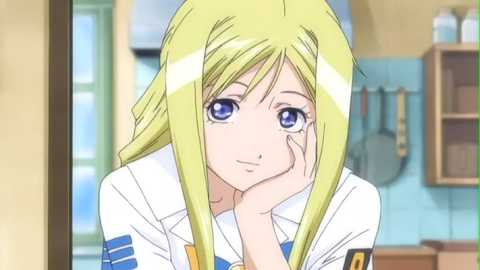
(Ironically enough, due to the changeover in production of the manga series from Aqua to Aria, which I understand is a change in production and not in story, the first episode of the actual anime takes place some time later than Akari's first day. The actual first day is presented some time later as a flashback. I also can't be the only one that contemplated that Alicia's interest in Akari might not seem entirely professional if some of the stills from this episode are taken out of context...)
When we last saw our protagonists, Akari had finally completed her apprenticeship and had been promoted to Prima. Afterwards, Alicia had something important to tell her, but all we see is Akari's shocked reaction before the episode ends. This episode, after being confronted by Alice and Aika, Akari tells them and us what's going on. Alicia wasn't training a partner, she was training a replacement. Alicia plans to retire, get married, and take a job at the Gondola Association. There are surprises in anime, and there this is beyond them. No hint of any of this until the final episode. The intro gives us a glimpse of a lot of the significant locations in the series, plus a sense of the massive outpouring of well-wishing that accompanies Alicia's announcement. Akari outwardly seems calm at her change of situation as she awaits the future.
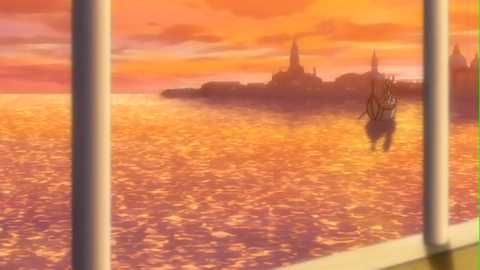
But, we get the sense that under the perennially bright facade, Akari hasn't yet admitted to herself that her world is about to change.
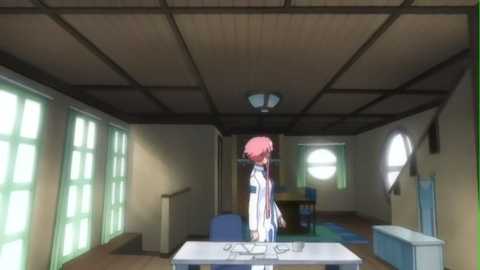
Finally, with waterworks in full blast, she admits her sadness and fear to Alicia, who provides comfort and admits that she held off promoting Akari because she too was afraid of change.
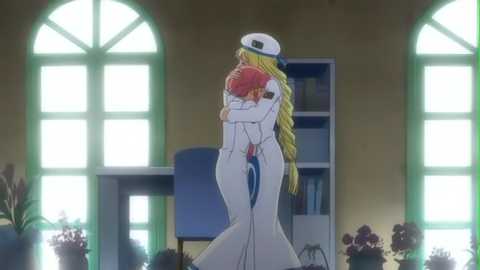

Akari recovers by remembering how everyone has grown and changed,
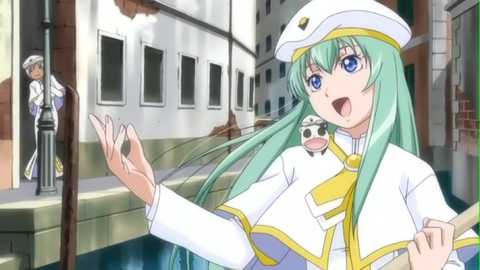
and all the happy experiences she's had since she came to Aqua...
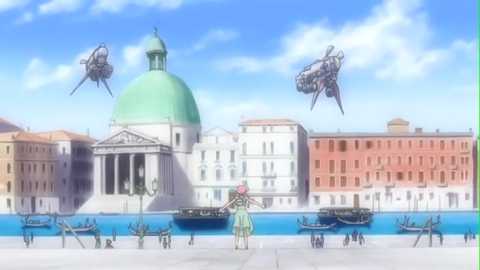
...and envisioning the wonderful future that they're all headed in to. (Come on, Akari's got one of the biggest pairs of rose-colored glasses in anime, and it's the last episode! Of course it's going to be sappy!)
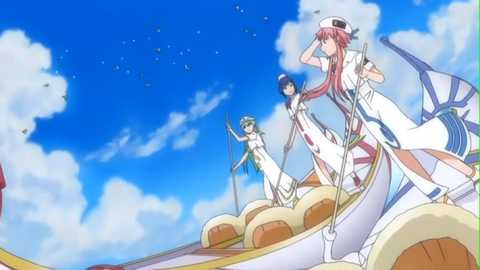
Anyways, the whole episode is another wonderful treat. From the wonderful scenery to the smallest details changed just for the final episode, the animators went all out. Aria company has always had a photo of its Prima Undine on the reception desk. As we see our first scene of Prima Akari with client, we get to see that they've put her picture on the desk in the corner of the image.
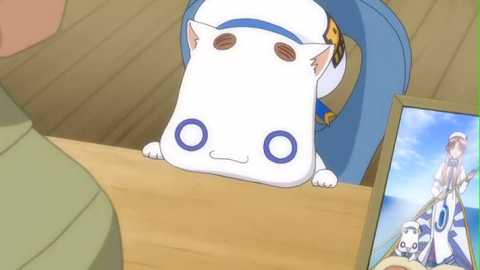
Her client is the mailman, who's name is revealed to be Anno. He's shown up in a number of episodes. More importantly from the standpoint of looking at this episode as the conclusion, he's the one that gave Akari her first gondola ride in Neo-Venezia and delivered her to Aria company. Fitting that he should be Akari's first seen customer.
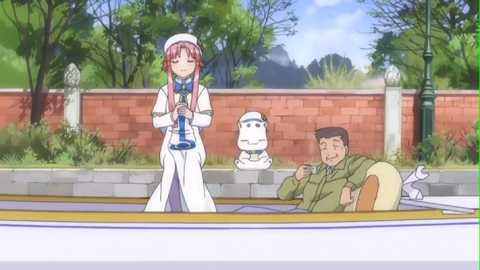
Finally, it's time for Alicia's retirement ceremony.
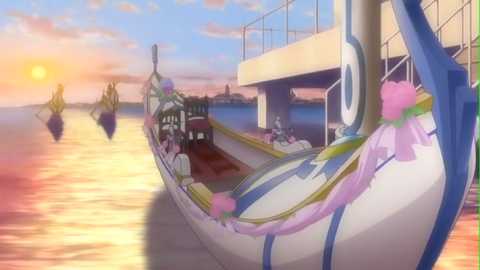
Escorted by Akira and Athena, the other two legendary Undines who trained alongside her, Alicia takes out her gondola for the last time as an Undine, with Akari and President Aria as passengers.
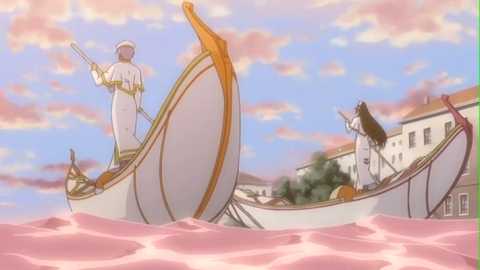
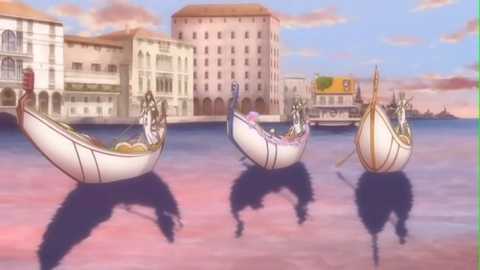
Waiting near the dock at San Marco Piazza are probably just about every other gondola Orange Planet and Himeya can put in the water.
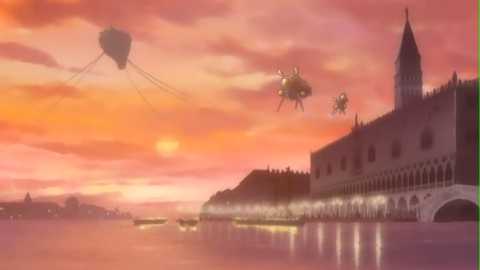
Why would the other two Undine companies go to such lengths? In addition to the fact that the companies seem to be on very friendly terms to start with, they must be ecstatic at the fact that the current reigning top Undine is retiring, and since she's taking a position with the gondola regulatory body, being on good terms with her as she leaves is probably a good thing.
A decent crowd of spectators turns out, including the Usual Suspects, Al, Akatsuki, and Woody.
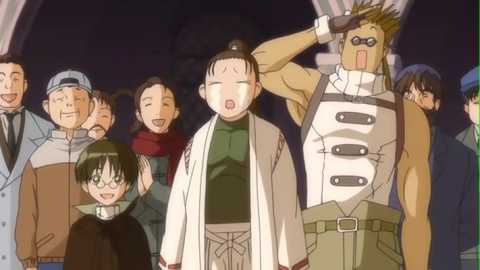
Alice and Aika have good positions in the ceremony as well.
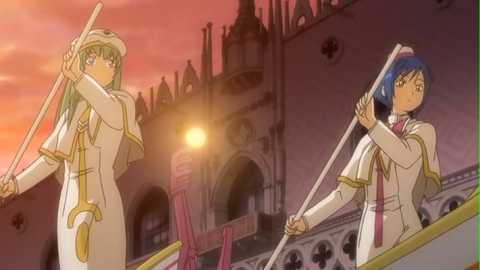

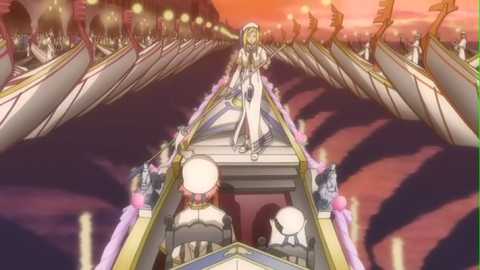
Interestingly enough, the gondola animations are one of the few places in the series where the use of CG is obvious in the animations. It does slightly spoil the moment.
Finally, the oar is passed to the next generation.

Afterwards, Akari returns to the office, to reminisce about the past and look forward to the future, which she is now able to accept will be filled with more good memories.
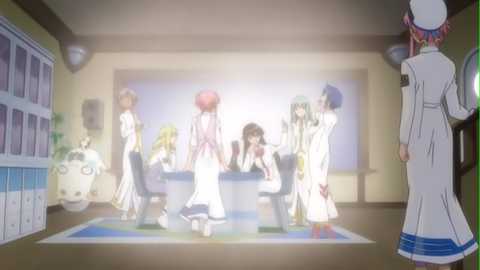
We get to see the near future, with Aika and Al in a relationship, Alice continuing to grow and hold her friendships together, Athena retiring to join the opera, and Akira left to reign as the remaining great Undine of her generation.
Oh, and so as not to leave anyone out...

Alicia with glasses for the win!
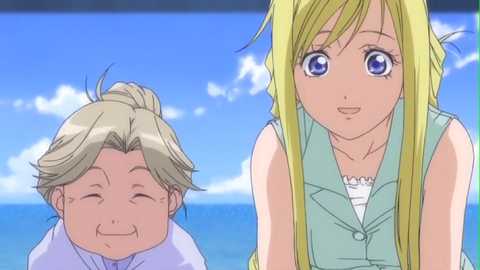
Alicia and Grandma are fine, too.
The series then jumps a bit into the future one last time. Akari is older, and has changed her hairstyle (it's a detail for the series that all three of the older characters in the series changed their hairstyles since they became Primas.)
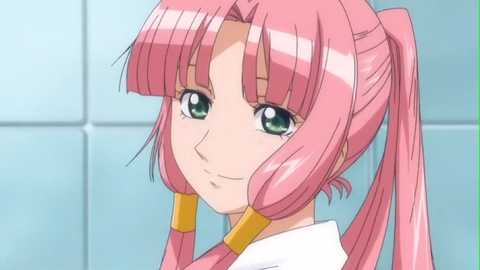
Furthermore, she has an trainee Pair of her own, Ai, her penpal from Earth that took a gondola ride with her in the first episode of the series. Ai stopped by to visit several times in the course of the series, so this wasn't entirely unexpected. Still, her appearance is used to demonstrate that the Kozue Amano knew how to write the series meaningfully and beautifully, as we watch Ai, Aria company's new trainee Pair Undine, wearing her new uniform, sits down to her first breakfast in Neo-Venezia and the beginning of her new life, with Akari, her new mentor, gazing on...
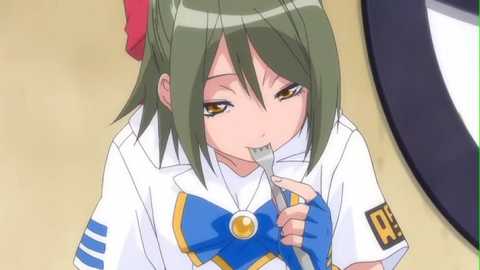
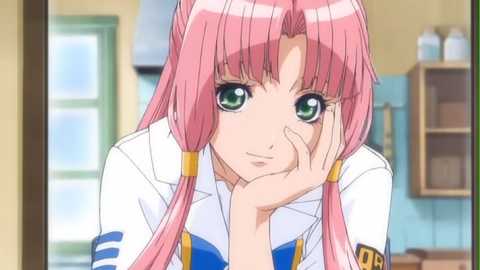
Posted by: Civilis at
09: 05 PM
| Comments (1)
| Add Comment
Post contains 979 words, total size 9 kb.
Saturday, June 07 2008
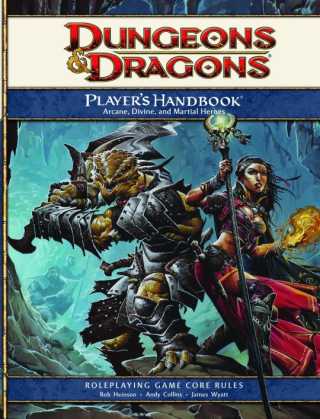
Before I get to my thoughts, a little tangential story, which does relate back to Dungeons & Dragons. Twice a week, I eat at Subway for lunch. It's generally better quality and variety than other fast food restaurants, but I still lump it in the same general class with McDonalds, Burger King, etc., and not with more trendy quick-service establishments like Panera Bread, Quiznos, or Chipotle. While all are not traditional restaurants, the differing price point and style is such that I view the latter chains as a separate class. Having eaten there twice a week for years, I'm something of a regular, and on good terms with the manager. At one point, I commented to the manager favorably on a new menu option, and was rewarded with the candid observation that the chain was looking to adjust the menu and correspondingly increase prices to be more comparable with places like Panera or Chipotle.
To me, this seems a major mistake. Subway, for me, is the best of the fast food class of restaurants, which for me is defined by low cost, fast service. When I go out for lunch at work, these are the two traits I am looking for. That Subway has added quality and variety are bonuses and as such the deciding factors in my preference for Subway. They are trying to establish brand recognition in the more upscale trendy quick service restaurant class, which is defined by having better quality and more variety than the limited fast food menu, but at a higher price and with a longer wait. Subway doesn't compare as well with the restaurants currently in this class on quality or variety, so I'm not as likely to think of going out to Subway when I could go to one of the other restaurants in the class, and its value over other fast food restaurants has lessened because they've increased prices. Subway has traded established brand recognition away in one class for the hope of developing new brand recognition in another class.
Wizards of the Coast is likewise trading away the established brand recognition of Dungeons and Dragons among the general roleplaying game class, because the fundamentals of the game system has changed significantly from the previous edition. That's not to say that the mechanics themselves are worse or wrong, but given the magnitude of the changes involved, there's no reason not to look into other systems at this point.
Specifically:
- The game has gone to almost a purely board and miniatures driven tactical combat system. If I want to micromanage combat that badly, I'll play a boardgame built for the purpose. I want RPG combat to be quick. I'd much rather say, "I attack the monster with my sword", roll to hit, roll to damage, then spend an hour pouring over the board micromanaging tactical combat.
- With that being said, the addition of one hit - one kill minion monsters changes combat dynamics, in part in a good way. I hate micromanaging hitpoints for monsters that won't last more than two hits anyways. This is more of an odd change for some players than others. I know one old school roleplayer that can't wrap himself around the idea that a monster fit for a high level party can have 1 hit point. It is odd, however, as most of these high level minions should be suitable as boss monsters for lower level parties. The whole minion idea makes more sense for more realistic genres than high fantasy where most bad guys only can take one hit anyways.
- Likewise, the mechanics of the rolerplaying aspect of the game has been diminished in the emphasis on tactical combat. There are fewer skills and non-combat abilities such as spells, and these are managed less and are built for "adventuring" in dungeon or wilderness environments, not roleplaying. I like roleplaying my characters. I find it fun.
- In some respects, the game is more MMORPG like, with all characters having a number of spell-like powers they can use, these being the source of the tactical micromanagement. All characters have elaborate power tables and so forth.
- The combat system is changed dramatically, with the 'to hit' system combined with most of what was the 'saving throw' system to form a unified mechanic that, while it makes the general flow easier, requires more memorization of details for specific powers, and requires relearning the basic system.
Posted by: Civilis at
09: 47 PM
| Comments (2)
| Add Comment
Post contains 849 words, total size 5 kb.
Friday, June 06 2008
Soldiers, Sailors and Airmen of the Allied Expeditionary Force!
You are about to embark upon the Great Crusade, toward which we have striven these many months. The eyes of the world are upon you. The hopes and prayers of liberty-loving people everywhere march with you. In company with our brave Allies and brothers-in-arms on other Fronts, you will bring about the destruction of the German war machine, the elimination of Nazi tyranny over the oppressed peoples of Europe, and security for ourselves in a free world.
Your task will not be an easy one. Your enemy is well trained, wellequipped and battle hardened. He will fight savagely.
But this is the year 1944! Much has happened since the Nazi triumphs of 1940-41. The United Nations have inflicted upon the Germans great defeats,in open battle, man-to-man. Our air offensive has seriously reduced their strength in the air and their capacity to wage war on the ground. Our Home Fronts have given us an overwhelming superiority in weapons and munitions of war, and placed at our disposal great reserves of trained fighting men.The tide has turned! The free men of the world are marching together to Victory!
I have full confidence in your courage and devotion to duty and skill in battle. We will accept nothing less than full Victory!
Good luck! And let us beseech the blessing of Almighty God upon this great and noble undertaking.
Dwight D. Eisenhower more...
Posted by: Civilis at
10: 43 AM
| No Comments
| Add Comment
Post contains 416 words, total size 3 kb.
Tuesday, May 27 2008
The episode opens with Akari picking up a visibly depressed Aika from one of the Himeya Undin Company offices for routine practice. When Akari finally stops her blissful "while it's lonely without Alice, we've got to be haoppy for her and do our best" speech and realizes something's wrong, Aika tearfully says that they can't practice together anymore, and the camera pans down to reveal...
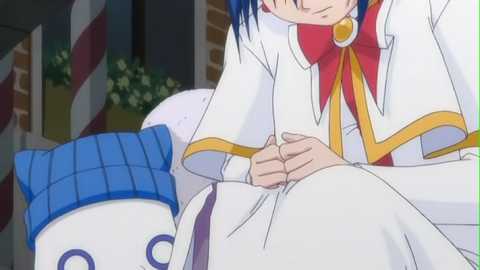
... Aika's already been promoted. As usual for her perennially good-natured personality, Akari is happy about her friend's success.
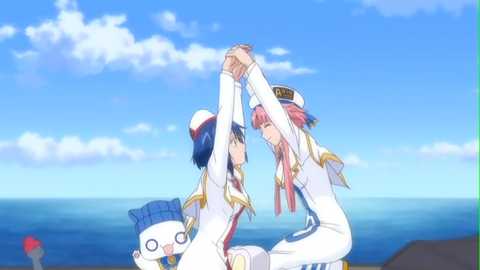
We get to see snippets of Aika's promotion exam through a flashback that plays behind the opening credits. (One of the nice touches with Aria is that the openings have always been pure new footage tied in to the upcoming episode.) Because most of the emotional build-up to Aika's promotion occurred in the previous episode, this isn't a massive disappointment, but there is evidence of an emotional promotion, complete with synchronized waterworks from Akira and Aika.
The scene shifts to Aria company, where after Akari recounts the days events, Alicia announces that she will hold Akari's promotion test the next day. Of course, this means Akari can't sleep, so she eventually goes out for an Undine-style all-nighter with a midnight gondola practice. At this point, the animators must have realized that "it's the second to last episode, and we haven't seen some of the minor reoccurring characters since episode 1! Let's put a few in!" So, Akatsuki the Salamander weatherman, and Woody the Sylph delivery jetbiker just happen to be out for a night's stroll.
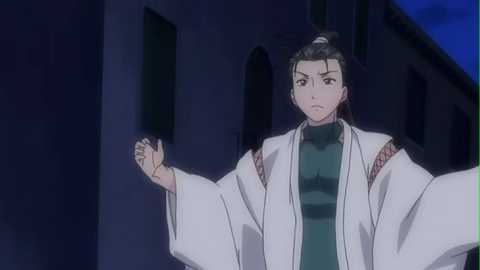
Akatsuki was Akari's first client as an apprentice Undine, and, though a self-proclaimed Alicia fan, shows that potential anime love interest antagonism towards Akari. Akari does happen to mention her upcoming exam.
The next day arrives, and after a rain delay, Akari's exam begins. We get to see more impressive Neo-Venezian scenery on the exam.
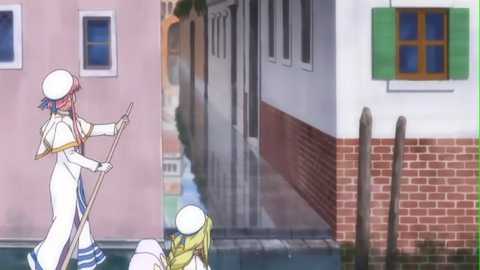
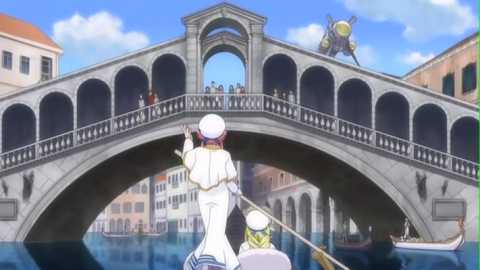
It's nice to see many of the characters in the series get there bit parts in cheering for Akari, as her friendliness and sunny disposition are her unique talent as an Undine.
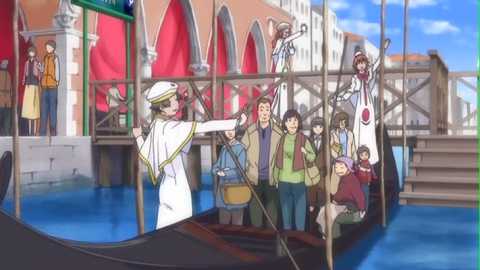
I think that the details in showing the people Akari has met and helped along the way makes the whole exam as emotional as Alice's, even though we've seen the same formula now three times (even if Aika's was foreshortened). The animation here, both in the detailed scenery, such as the Rialto bridge, the colorful crowds, and the animation effects, are more pronounced than the rest of the series, as befitting one of the emotional climaxes of the series.
As expected, Akari passes the challenges before her. As with Alice and Aika, Alicia gently takes her hand and removes her glove.

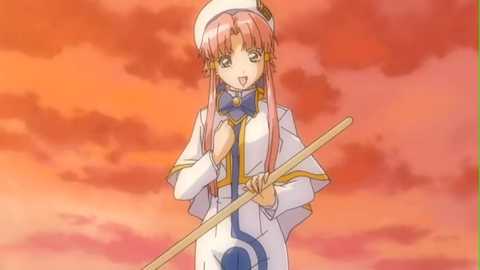
Congratulations, Akari, you've been promoted to Prima and awarded the name Aquamarine. We have one episode left, and at the very close of this episode, Alicia announces she as something important to tell Akari, hinting at the grand finale yet to come...
Posted by: Civilis at
07: 50 PM
| Comments (2)
| Add Comment
Post contains 537 words, total size 4 kb.
Tuesday, May 20 2008
The episode opens with some visually stunning shots of the building of the Himeya Undine company, the oldest on Aqua and the employers of Aika and Akira, along with Akira musing on some not-entirely-flattering titles as possibilities for Aika when she becomes an Undine. Akira overhears that Alice has been promoted straight to prima, and that although Aika seems to be taking it well, the other Himeya Undines are worried for her. It's odd for Akira, of all people, to be the last one to know, although she has difficulties with some of the other Himeya Undines.


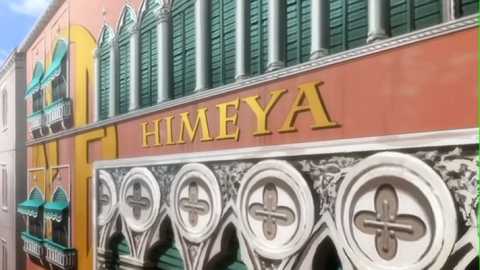

After observing Aika on a training trip, Akira attempts to bring up the subject and is too nervous to do so. Aika, suspecting that she's made some mistake in front of her strict instructor, is equally nervous. The whole thing is a succession of distorted facial reactions.
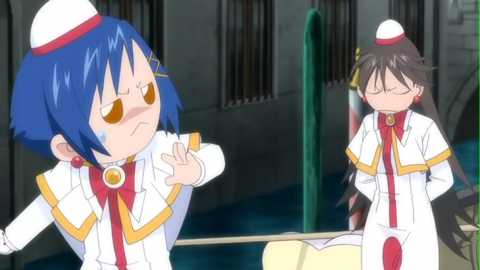
Akira eventually takes Aika out for ice cream, and the two walk along, Aika oblivious to her brooding instructor. Aika eventually accidentally raises the issue by mentioning that she had seen Alice's unprecedented promotion.

Akira, worried about whether Aika is suppressing her true feelings, confronts her student, only to find that Aika is genuinely proud and happy for Alice, and at the same time, determined to catch up to her friend. This relieves Akira, who then taunts Aika with the list of potential names, in part as her own encouragement. Akira also mentally acknowledges that Aika may be about ready to assume her eventual duties as heir to the management of Himeya Company.
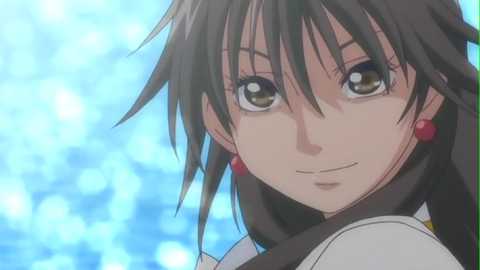
The story then shifts to Alice, last seen trying to adjust to life as a Prima. She is more comfortable as a Prima. We have some time to watch her at work, as she traverses more beautiful scenes from Neo-Venezia.
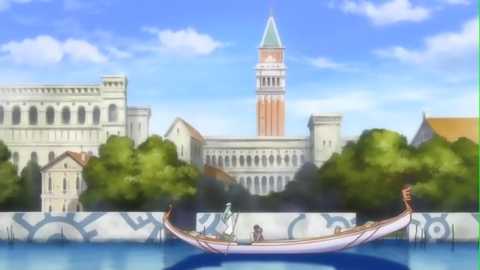
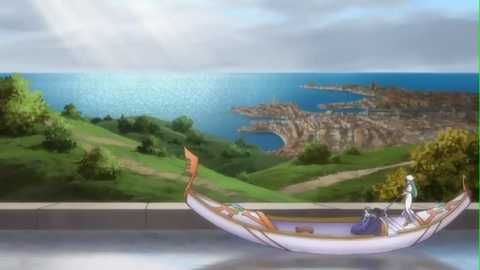
Alice is beginning to appreciate the life experiences she gets interacting with her guests as a Prima Undine. She also laments the lack of time spent with her friends. That is, until she returns to her apartment on a rainy night...

...to find Aika and Akari and the cats, happily eating more bananas as they wait for their friend. Incidentally, I suspect this is another example of Athena working behind the curtain to support Alice. The three enjoy a pizza and start to establish the same sort of friendship that Athena, Alicia and Akira show, that while they are no longer constantly together, the bonds that they have formed will remain forever.
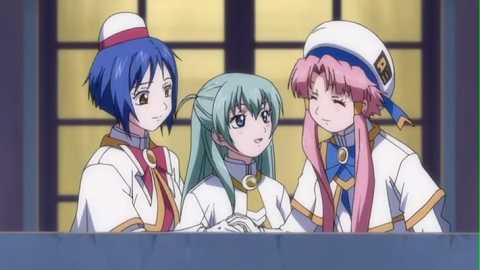
Wonderduck has an excellent post up about his reaction to the final episode. I echo his thoughts, in that for me a world or setting can have no higher praise than "I wish I could go there". The visuals in this episode really exemplify what can be done with animation to craft a setting and flesh it out into a world that is real enough and yet wonderful enough that it has that attraction. The animators really use light and shadow, water and weather effects, and layered scenery to create an illusion of reality that sucks the viewer in. While the character development makes Aria a good series, the setting of Neo-Venezia is really what makes Aria great.
Posted by: Civilis at
07: 49 PM
| Comments (3)
| Add Comment
Post contains 568 words, total size 5 kb.
44 queries taking 0.0645 seconds, 143 records returned.
Powered by Minx 1.1.6c-pink.









